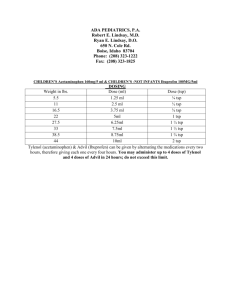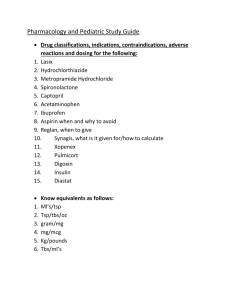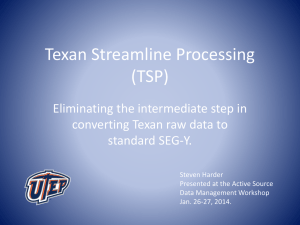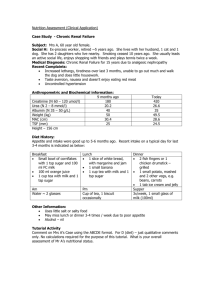TESTIMONY OF COLLEEN M. KELLEY, NATIONAL PRESIDENT
advertisement
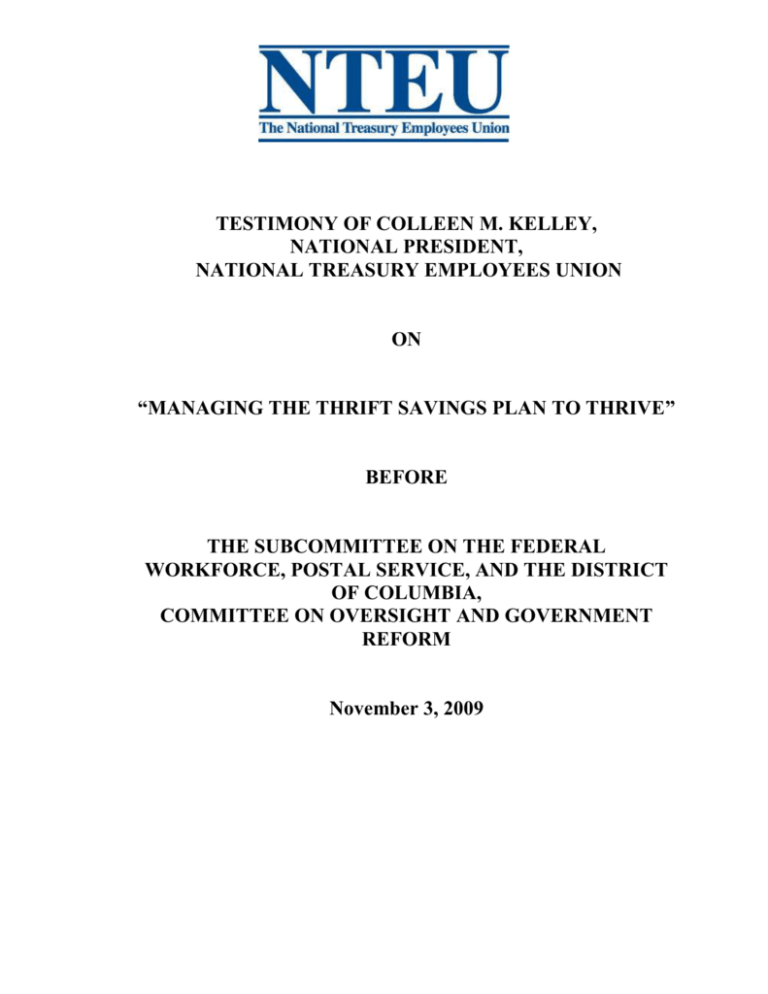
TESTIMONY OF COLLEEN M. KELLEY, NATIONAL PRESIDENT, NATIONAL TREASURY EMPLOYEES UNION ON “MANAGING THE THRIFT SAVINGS PLAN TO THRIVE” BEFORE THE SUBCOMMITTEE ON THE FEDERAL WORKFORCE, POSTAL SERVICE, AND THE DISTRICT OF COLUMBIA, COMMITTEE ON OVERSIGHT AND GOVERNMENT REFORM November 3, 2009 Chairman Lynch, Ranking Member Chaffetz and other subcommittee Members, thank you for the opportunity to testify on recent developments and plans for the future at the Federal Retirement Thrift Investment Board. In 1983, Congress decided to include federal employees in Social Security and set about designing a new retirement system around that notion. In keeping with the trend at that time, Congress moved away from the existing defined benefit program, the Civil Service Retirement System. The new system had three parts: Social Security, a small defined benefit, and a tax-deferred defined contribution retirement savings program similar to the private sector’s 401(k) s. The Thrift Savings Plan was the work of a large group of committed organizations, and I am happy to say that NTEU was part of that group. We sought a program that would have low administrative costs and maximum earnings potential. Since the plan’s inception in 1987, participation by FERS-covered employees has risen to 82.2%. The TSP consists of five individual investment funds: the Government Securities Investment (G) Fund, which invests in short term non-marketable U.S. Treasury securities; the Fixed Income Index Investment (F) Fund, which invests in an aggregate bond index fund; the Common Stock Index Investment (C) Fund, which invests in a stock index fund; the Small Capitalization Stock Index Investment (S) Fund, which invests in a different stock index fund; and the International Stock Index Investment (I) Fund, which invests in an international stock index fund. Lifecycle (L) funds were added in August of 2005, as asset allocation portfolios constructed from the five individual funds in the TSP pegged to a participant’s retirement age. Given the tumultuous last two years, the earnings of the various funds at the Thrift Board seemed to be in line with, or better than, the best of the private sector plans. A report published by Hewitt Associates in May of this year indicated that the median rate of return on 401(k) plans was a minus 28.3 percent. The rate of return on TSP funds ranged from 5.45 % (F Fund) to minus 42.43 % (I Fund), with the median rate between minus 22 and minus 27 %. Our members have been generally pleased with the Thrift Savings Plan, and even when NTEU disagrees with Thrift Board policy, as when the limitation on interfund transfers was placed on participants, we can’t disagree with the results – low administrative overhead, good return, and an open dialogue. A 2007 GAO report compared the TSP administrative costs favorably with private 401 (k) plans, with the Thrift Board’s administrative costs at 6 basis points and private plans at 75 basis points. With input from employee organizations, with informed and prudent leadership by the Board and by the TSP managers, and with leadership provided by your subcommittee, we think that there are good systems in place to aid the TSP in remaining an important part of federal employees’ retirement. It has been a very volatile time for the TSP Board and for every plan tied to market forces, and there have been many advancements and legislative changes to the Thrift Savings Plan. As an active member of the Employee Thrift Advisory Council (ETAC), NTEU has participated in policy decisions that affect the now 4.2 million active or former federal employees who invest in the Fund, whose assets are now approximately $234 billion. NTEU’s primary concern is protecting the stability and maintaining the viability of the TSP for our members and for all federal employees. LEGISLATIVE CHANGES With the passage of H.R. 1256, the Family Smoking Prevention and Tobacco Control Act, several changes were made to the Thrift Savings Plan: Immediate agency contributions – this provision, and the one that follows eliminates the waiting period contemplated in the original TSP statute. Through legislative changes, employees could immediately participate in the TSP with their own money, but had to wait 6 to 12 months to receive matching funds or the automatic agency contribution. Offering immediate contributions is a way to entice new employees to become active savers. At our last ETAC meeting, Executive Director Long advised us that this item was fully implemented in August. Automatic Enrollment – In conjunction with the immediate agency contributions, there is a new provision setting up automatic enrollment for new employees. This way, federal employees are able to start saving for retirement immediately and hopefully will maintain or improve the savings rate as they move through their careers. There had been some discussion at ETAC as to whether the default fund would be the L (Lifecycle) fund or the G (Government Securities) fund. Originally, the Board had suggested the L fund because of the good returns, but as the economy soured, many, including NTEU were concerned, and ETAC encouraged the Board to set the G fund as a default. This ensured that the automatic funds would not be subject to market forces in a volatile time. NTEU worked with the Board to make sure that this change includes an “opt-out” provision, so that employees can decline the savings if they find they can’t afford to contribute. Spouse Beneficiary Accounts – this provision was an initiative of ETAC. Rather than requiring spouses to withdraw TSP funds on the death of a participant, spouses will now have the option of leaving the funds in the TSP and take ownership of the account. In an effort to protect the funds during this interim period, the Thrift Board will move the funds into the G fund, and then once the accounts are set up, the surviving spouse will be given the option of moving the money to other accounts. The Board hopes to have this system set up by June of next year. NTEU has heard from several members who are waiting for this option to begin. We believe that this is a valuable reform, and we are pleased that it was part of the final bill. Roth TSP feature – the Board is embarking on a two-year project to provide a “Roth” feature to TSP participants. Under Roth, employees can contribute after-tax dollars. Contributions to a Roth account count against IRS limits (in 2009, $16,500 for regular contributions and $5,500 for catch up contributions). A Roth account will not allow a participant to contribute any more money than the law currently allows. Because tax is paid up-front, Roth contributions, and any attributable earnings are tax free at the time of withdrawal. The Roth option requires extensive modification to both agency and TSP record-keeping and accounting systems. While systems updates will need to be monitored closely, NTEU views the Roth option as a welcome addition to the Plan, especially for younger workers. However, the Board must be prepared to educate the federal workforce on the tax planning issues inherent in a Roth option. Mutual Fund Window – the Tobacco bill contained a provision that authorizes a mutual fund window. A mutual fund window is a good idea in the abstract. If a person wanted to invest in only socially conscious firms, or in gold or oil futures, one could. Having a variety of funds to invest in is a desirable goal. ETAC considered this option, and after a range of views was presented, no consensus was reached. At our urging, the bill includes a provision stating that the expenses charged for use of the mutual fund window will be borne solely by the participants who use the window. In addition, to protect the interests of those who would participate, the Board can establish terms and conditions for participation including requirements relating to risk disclosure. The Council believes that the Plan has enough diverse accounts within each of the five funds, and with the addition of the five Lifecycle funds, provide excellent opportunities to earn money on their retirement savings. On the other hand, we know there have been some participants who wanted to invest in certain types of stocks that are not available. We look forward to the Board’s analysis of the cost, benefit, and risk associated with mutual funds. Our bottom line on this is - what is in the best interests of our members? NEW PROPOSAL In his weekly address on September 5, President Obama focused his remarks on reviving the economy and creating incentives to save. One of his initiatives was to allow employees to invest employer pay-outs for unused leave in their retirement plan. Revenue Rulings 2009-31 and 2009-32 sanction two kinds of contributions to 401(k) plans: one is the dollar value of unused leave that is cashed out at year-end and the other is money that would otherwise be distributed as a lump-sum at the time of termination. NTEU, on behalf of our members, contacted both the IRS and the Thrift Board and inquired whether the unused annual leave that is cashed out at separation of federal service could be deposited in the TSP under the lump-sum provision. Many of our members carry over the maximum amount of annual leave on a yearly basis (240 hours), so this could significantly boost their TSP accounts. Both IRS and the Thrift Board have indicated to NTEU that, in order for federal employees to take advantage of President Obama’s initiative, legislation would have to be passed to amend the Federal Employees’ Retirement System Act of 1986. NTEU is continuing to pursue this option, and we ask the help of you and your subcommittee, Mr. Chairman, in working together to write and achieve passage of such legislation. GROWING PAINS The phenomenal growth of the TSP brings with it a need for updated automation systems and increased safeguards. The Board shared with ETAC the results of an audit done earlier this year by Clifton Gunderson, a certified public accountant firm. The auditors had several suggestions for decreasing risks and increasing security at the Board, and we have no problem with the report. The automation update experienced a significant cost overrun, but little information was given to ETAC on the reasons for the overrun. The website will receive a much-needed update and participants will be asked to view and comment on it before it becomes final. NTEU would suggest that updates be provided to the committee on these improvements. In closing, we appreciate your oversight of the TSP. It is an important part of federal retirement. We need to make sure that the Board is working to ensure that all participants understand the changes taking place within the TSP. There will have to be an outreach program developed, especially for the Roth option. There will have to be dissemination of information about the new spousal benefit. Employees need to be able to make informed choices. There must be a careful and deliberate review before changes such as the mutual fund window are added. The number one goal is to ensure stability, integrity and cost efficiency in the TSP so that, as the hearing title states, the Fund will thrive, and our retirees prosper. Thank you.

